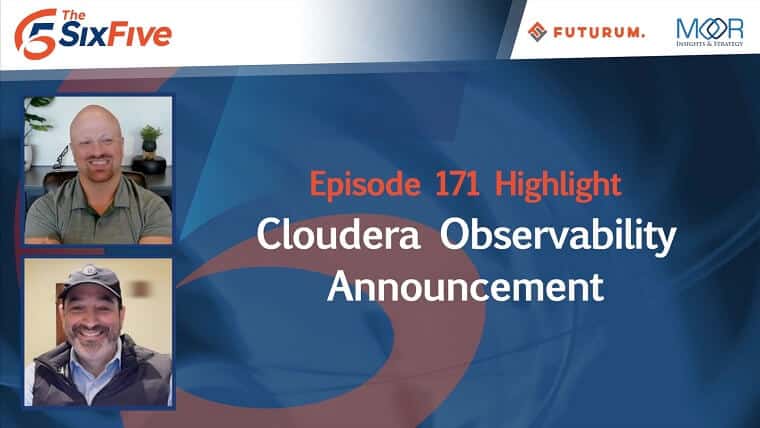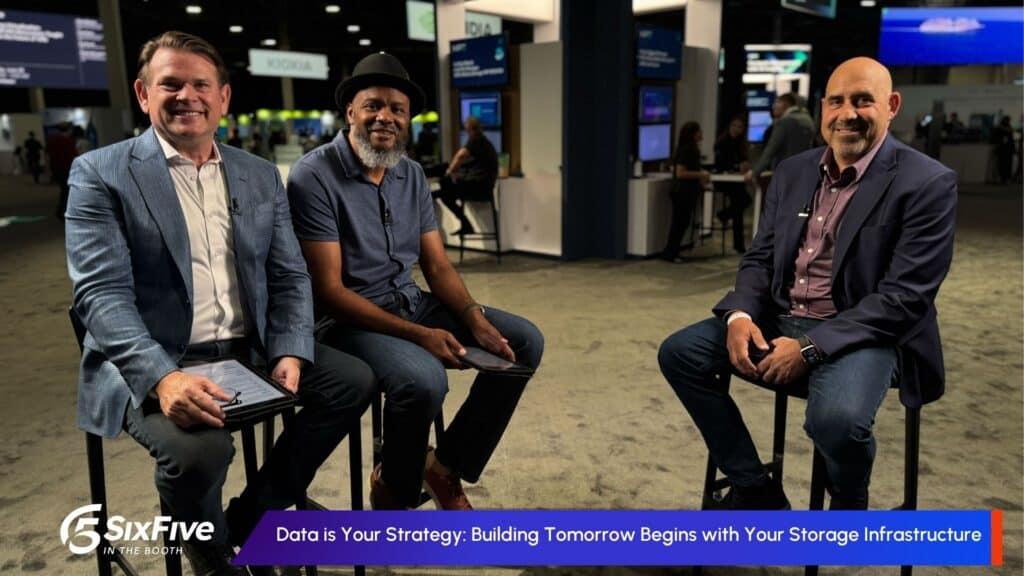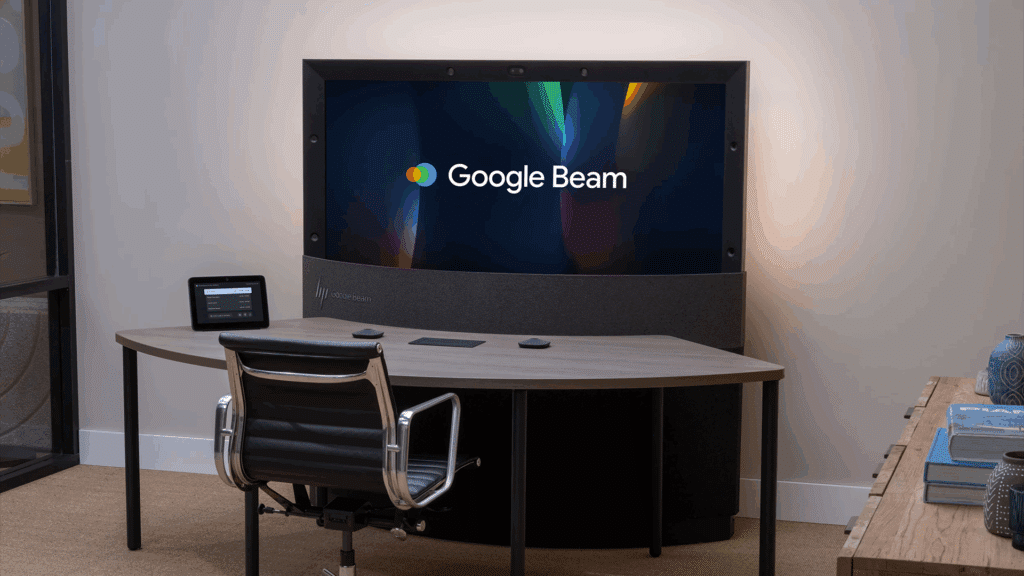The Six Five team discusses Cloudera Observability Announcement.
If you are interested in watching the full episode you can check it out here.
Disclaimer: The Six Five Webcast is for information and entertainment purposes only. Over the course of this webcast, we may talk about companies that are publicly traded and we may even reference that fact and their equity share price, but please do not take anything that we say as a recommendation about what you should do with your investment dollars. We are not investment advisors and we ask that you do not treat us as such.
Transcript:
Daniel Newman: Let’s talk about something much more enterprise. Let’s talk about observability. Cloudera. Oh, by the way, at the Six Five Summit announced a powerful new observability solution. I had the chance to talk to CEO Rob Bearden on the Six Five Summit and on the day of, they put out a press release, isn’t it cool that the Six Five Summit is becoming a product launch platform? That’s so cool.
Patrick Moorhead: I do. I love that. I love that so much.
Daniel Newman: And really what they announced was a SaaS tool that provides telemetry data and gives visibility into the performance and health of the Cloudera environment. So in an era of observability, Cloudera too is launching an observability platform. So, it’s basically all about customers being able to monitor and optimize their platform. With the era of AI growing, and by the way, Cloudera having something like 50 times the data, 50 times the data of Snowflake or something, it’s a huge amount, it’s a huge amount of data under management. And they’re going to be able to use this to basically now optimize the data platform, deal with financial governance, system monitoring, service health monitoring, workload optimization, what else? Self-service analytics and issue resolution.
Now. This is focused on the Cloudera data environment. So this is not observability in the sense of the observability that’s looking at a whole IT architecture and ecosystem. This is basically saying, “You may have petabytes of data in your business under management and all this data is influential to how apps run, how infrastructure is performing and such.” So it’s working inside the Cloudera data environment to provide observability so that you can use Cloudera in find issues, root causes, support requests.
I thought this was a good add, Pat, I mean this was a good additional capability. Their roadmap has been very innovative for a company that sometimes doesn’t get credit for being innovative. They’ve been showing predictive AI-focused stuff, Pat, AI and ML. By the way, another company that’s been doing this for a really long time. It’s not a new thing there, but predictive tuning, automated metadata, intelligent troubleshooting, cost predictions and capacity. So these are things that they’re doing and building around the observability platform. And I think the observability platform is giving customers more of a reason to stay. And I think for Cloudera, that’s got to be a big focus with all the hyperscale cloud providers, data solutions, with all the born-on cloud is they need to make sure they’re compelling the market and the customers that have been building for a long time on Cloudera to stay on Cloudera. And I think this observability solution gives more ammo to keep the customers on the platform.
Patrick Moorhead: No, listen. First of all, observability is all the rage, and that’s because of the fractalization of infrastructure and applications. There was a day that all data applications and infrastructure was in one place and you knew if that mini computer or mainframe or even [inaudible] server application went awry, you knew where the problem was. But now we’ve got applications that utilize 12 different APIs that all have to come together. We have infrastructure in the on-prem, public cloud, on the edge, multiple IS providers, and you need to figure out what the heck is going on. Heck, there could be something going on in your device at the endpoint that is a problem. So it’s all the rage.
One of the areas that people haven’t invested a lot in is observability for data management. And that’s exactly what Cloudera is doing here. They’re looking at it from a security point of view. You can clog up an entire database with some rogue application hitting it a million times. The second thing you can do is you can spot a security issue. I like the cost management point of view as well. In the future, I fully expect them to join some observability interoperability group to be able to work across every observability to make it easier for the enterprise to stitch all those observability packages together.
Author Information
Daniel is the CEO of The Futurum Group. Living his life at the intersection of people and technology, Daniel works with the world’s largest technology brands exploring Digital Transformation and how it is influencing the enterprise.
From the leading edge of AI to global technology policy, Daniel makes the connections between business, people and tech that are required for companies to benefit most from their technology investments. Daniel is a top 5 globally ranked industry analyst and his ideas are regularly cited or shared in television appearances by CNBC, Bloomberg, Wall Street Journal and hundreds of other sites around the world.
A 7x Best-Selling Author including his most recent book “Human/Machine.” Daniel is also a Forbes and MarketWatch (Dow Jones) contributor.
An MBA and Former Graduate Adjunct Faculty, Daniel is an Austin Texas transplant after 40 years in Chicago. His speaking takes him around the world each year as he shares his vision of the role technology will play in our future.





